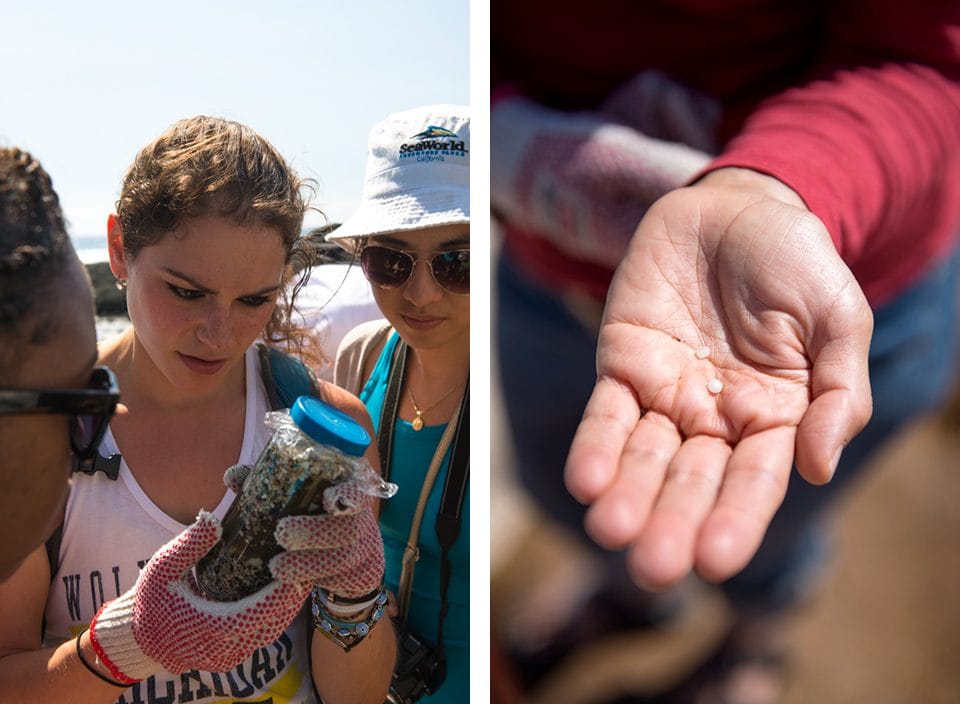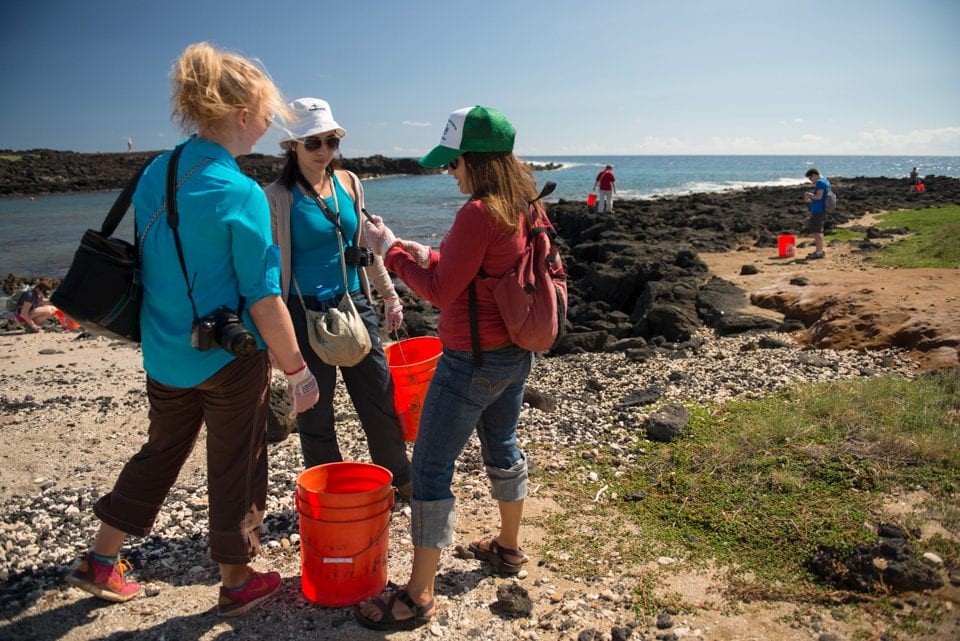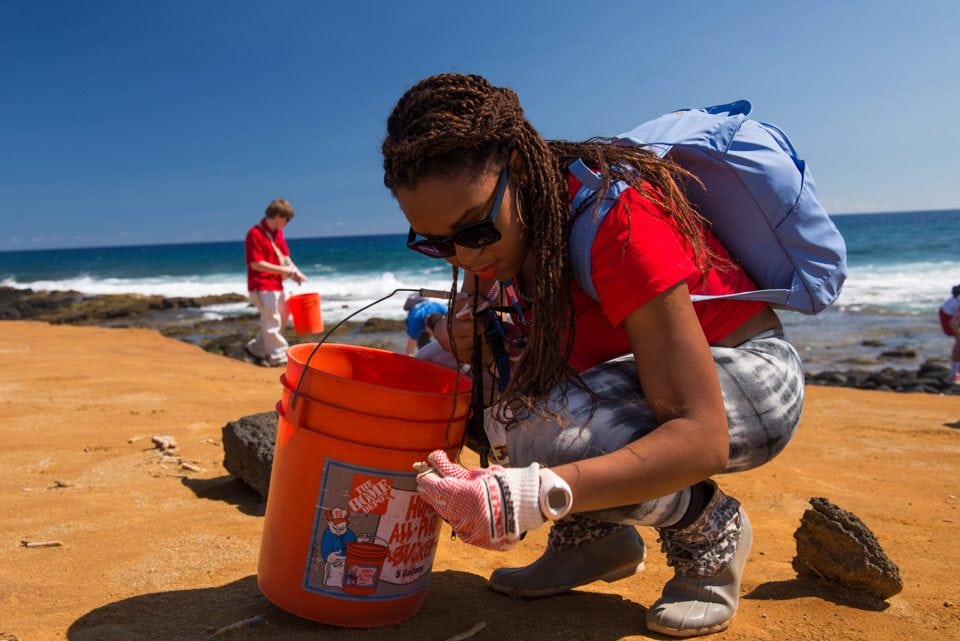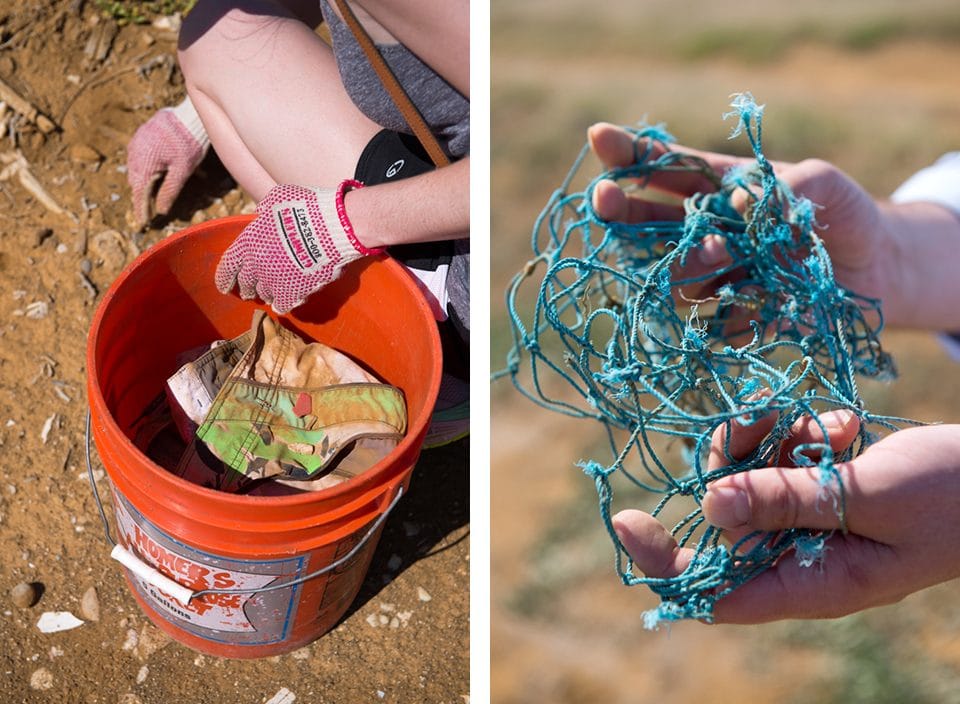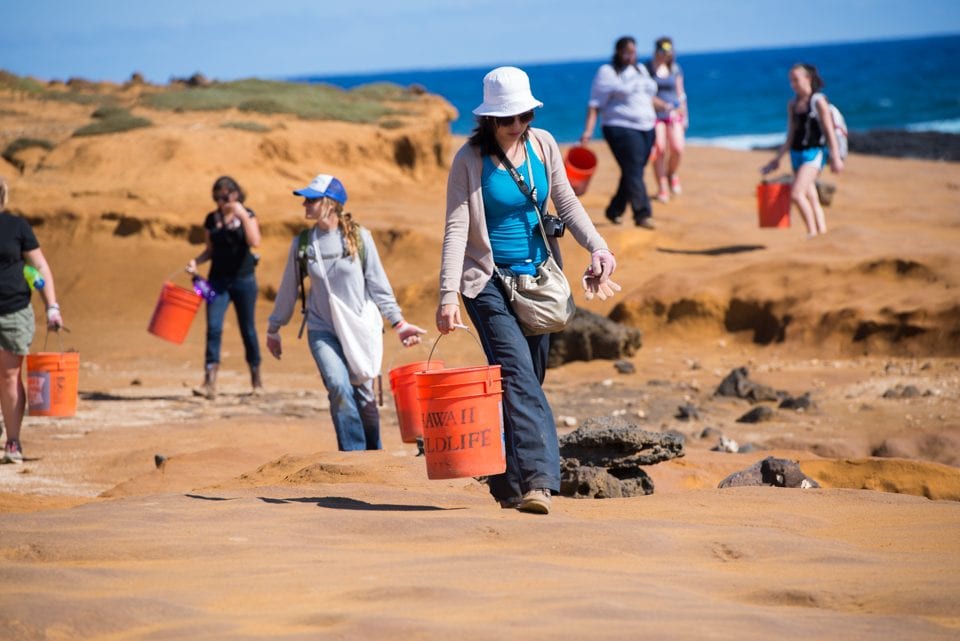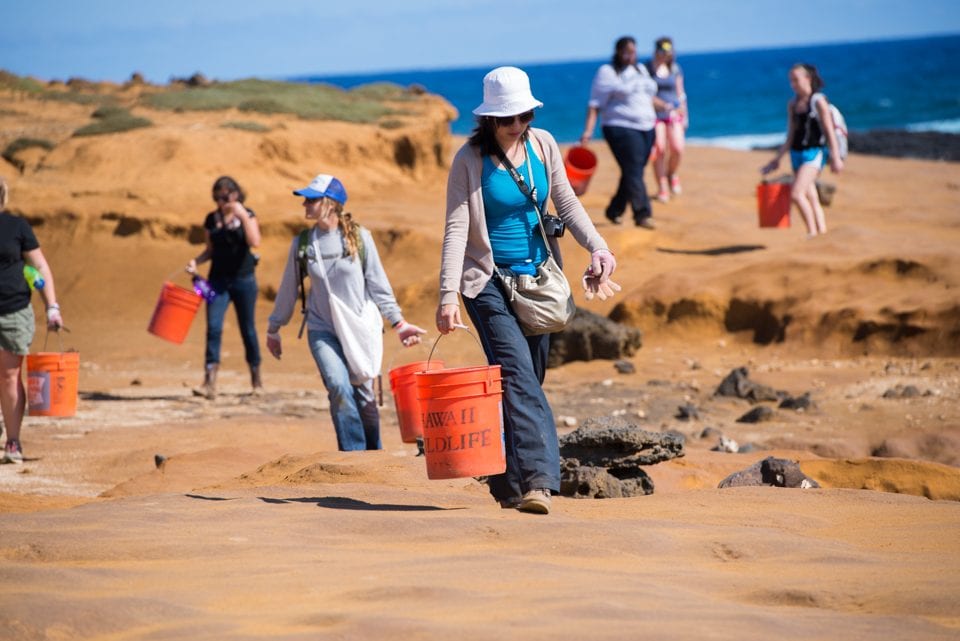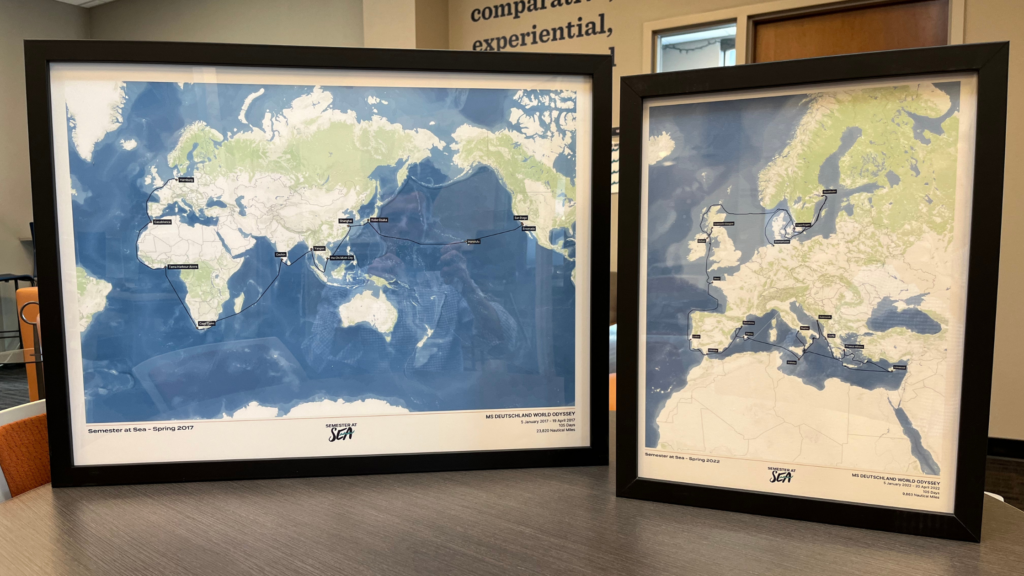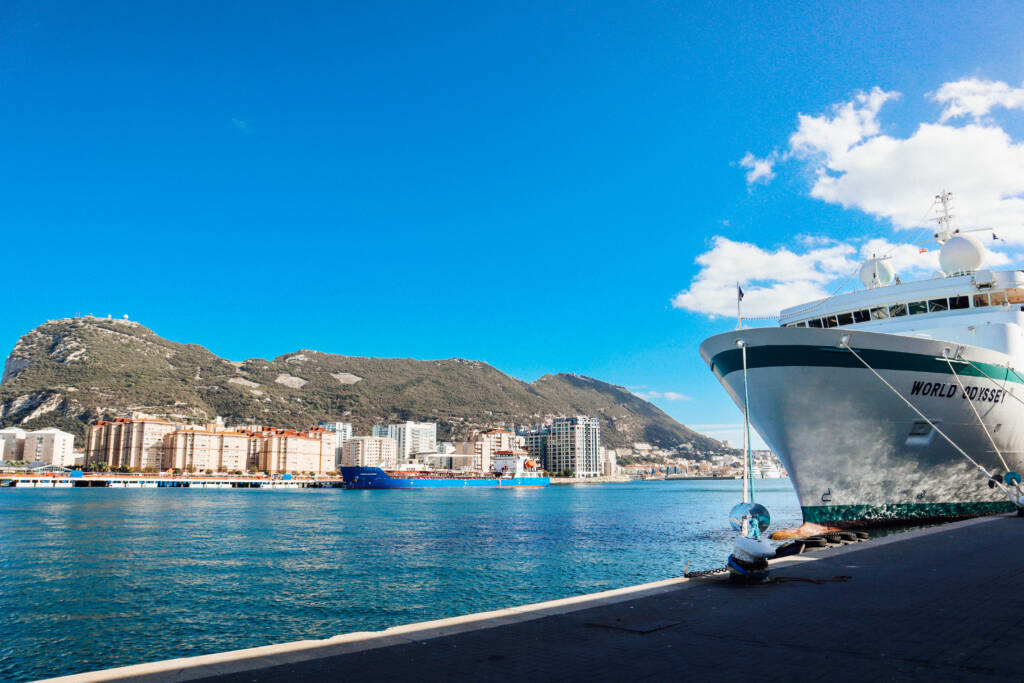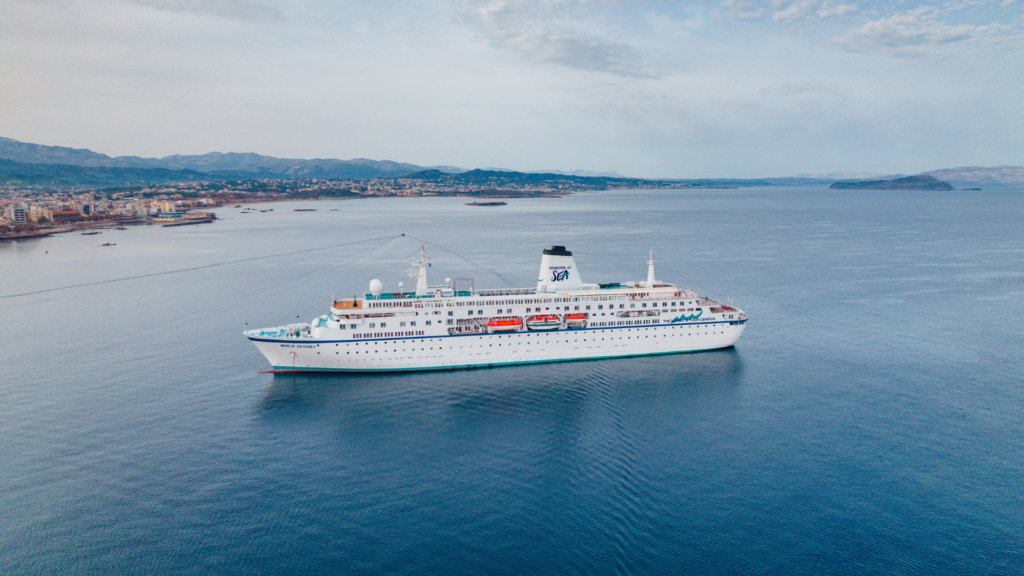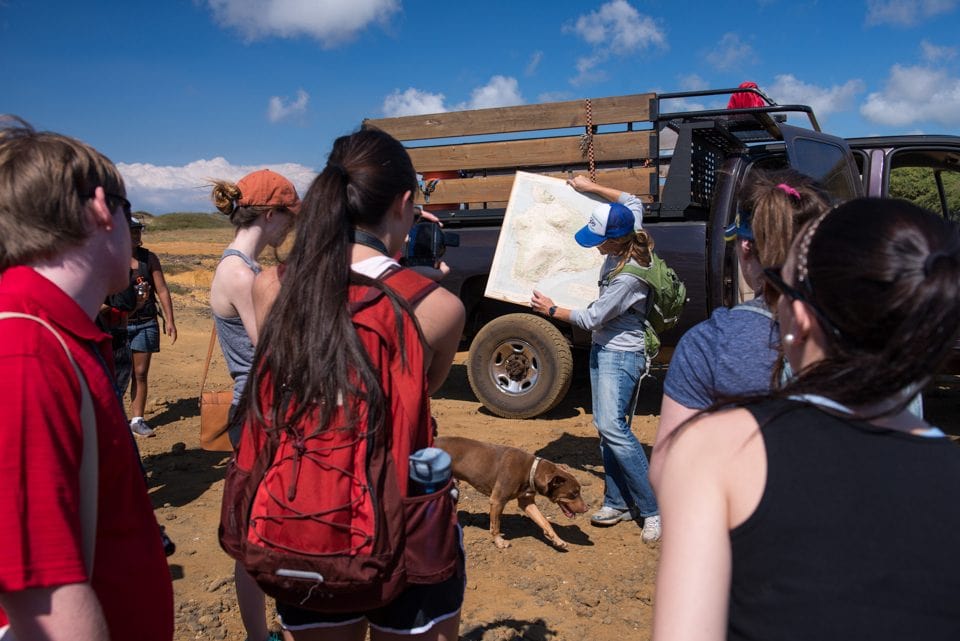
In Professor Jeremiah Chamberlin‘s Writing and Academic Inquiry course, he asks his students to read like writers. On board the MV Explorer, they have been reading Donovan Hohn’s Moby Duck, a non-fiction book in which the author sets out to explore the disappearance of thousands of bath toys from a container ship in the Pacific Ocean. Hohn’s search for answers takes him across the ocean, deep into the issue of marine debris, and to Hilo, Hawaii, also the first stop for the Spring 2014 voyage.
Before arriving in Hawaii, Chamberlin asked his students to assume the role of carpenter and deconstruct Hohn’s writing techniques to better understand the craft. He tells students to pay particularly close attention to his description of Hilo and the debris-strewn beaches near South Point, where they would soon be visiting. The marine debris, mostly made up of plastics, comes to the Hawaiian Islands via the Great Pacific Garbage Patch, an area where the convergence of ocean currents from the North Pacific Gyre causes trash to accumulate and cycle through the ocean. Currents wash the debris along the southeastern coastline on the windward side of the island.
In Hilo the students disembarked from the MV Explorer to follow in the footsteps of Hohn and to put their observation and research skills into real-life situations. The group met with Bill Gilmartin, founder of the Hawaii Wildlife Fund, and one of the characters in Hohn’s book. Gilmartin and his colleagues traveled with the students from Hilo towards the southeastern beaches of the Big Island and explained their efforts to remove and prevent marine debris.
Chamberlin asked his students to measure the distance between their expectations and anticipation. Hohn described coves filled with piles of debris, but when the students arrived, the scene wasn’t what they expected. The section they were to beachcomb was a relatively “clean” beach compared to nearby beaches. The debris, consisting mainly of fragments of plastic, was scattered throughout the sand. If left alone, the small plastic pieces would continue to break apart, but never decompose.
After beachcombing a one mile stretch along the southeast coastline of Ka’≈´ on Hawaii Island, the students had collected fishing nets, oyster spacers, swim suits, lids, caps, bottles, metal, plastic fragments, and other flotsam. They were able to step into the issue of marine debris that they had been introduced to through Hohn’s book and come away with first-hand knowledge to produce their own essays.
